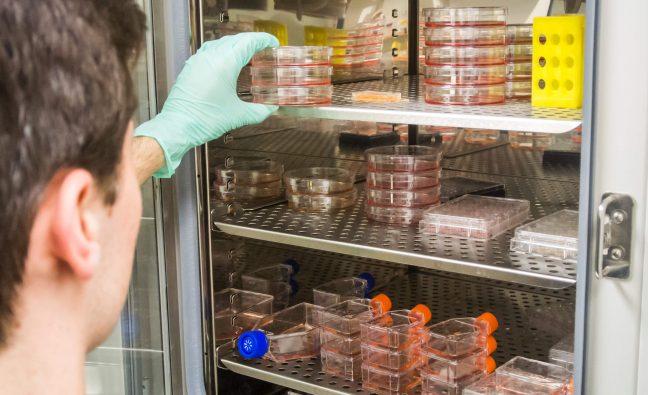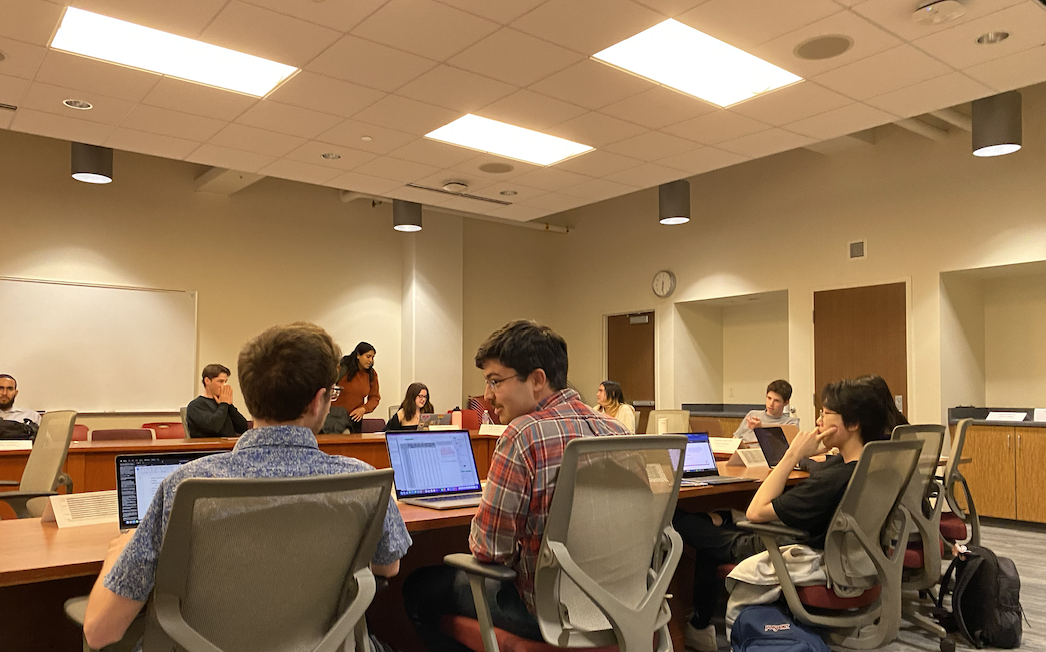Anita Bhattacharyya, a professor of cell and regenerative biology at the University of Wisconsin, is doing innovative research to understand how changes to brain development in the womb lead to intellectual disability in people with Down syndrome at the UW Waisman Center.
This approach aims to shed light on how brain development in individuals with Down syndrome differs from typically developing individuals and find potential targets for therapy.
Down syndrome is a genetic disorder that occurs when abnormal cell division causes an extra chromosome to be added to chromosome 21, also known as Trisomy 21. Though the genetic cause of Down syndrome and its related phenotypic effects are well studied, there are some gaps in the understanding of how prenatal brain development of Down syndrome differs from those who do not have the disorder.
The researchers received an $11 million Transformative Research Grant from the National Institutes of Health, also known as NIH. This grant is awarded to research that the NIH believes is highly innovative and is likely to have a large impact on the biomedical and behavioral fields.
The main method of studying the disorder currently uses animal models which do not accurately represent how the disorder presents in humans. Bhattacharyya and her collaborators are developing a new technique of modeling the prenatal Down syndrome brain based on human-induced pluripotent stem cells, also called iPSCs.
Lab Report: Motor and Brain Development Lab studies motor skills to understand autism
According to the NIH, since scientists are unable to manipulate human development like they can with model animal organisms due to ethical reasons, much of the information about development has been extrapolated from model organism experiments and studies. While these models have been essential in studying development, iPSCs offer a new way to study embryonic development by using human cells instead of model organisms.
Human induced pluripotent cells start as either adult skin or as blood cells that can then be reprogrammed to become almost any other cell type. Bhattacharyya and her colleagues are using iPSCs from adults with Down syndrome and reprogramming them into neuron cells — cells located in the brain, specifically the prefrontal cortex — to study how Down syndrome neuronal developmental pathways diverge from the neurotypical pathway.
“Although Down syndrome is quite prevalent and we know a lot about individuals with Down syndrome … what we don’t have a good understanding of is how brain development in Down syndrome is different,” Bhattacharyya said.
Bhattacharyya, Su-Chun Zhang, UW School of Medicine and Public Health Professors of Neuroscience and Neurology and other collaborators at Waisman and the University of Washington-Seattle and Seattle Children’s Hospital, hope to compare the reprogrammed stem cells to prenatal tissue to confirm that iPSC is a viable model for studying prenatal Down syndrome development. If this is confirmed, prenatal tissue, which the researchers have limited access to, may no longer be required to study prenatal development.
‘Vaccine apartheid’ threatens America’s progress against pandemic
Waisman Center investigator Daifeng Wang, professor of biostatistics and medical informatics and computer science, and André Sousa, who is a neuroscience professor, will be collaborating on the project. Bhattacharyya said Sousa’s expertise in single cell sequencing in human brain development and Wang’s valuable computational skills are incredibly pertinent to this project.
Zhang’s lab is also looking at how the functionality of the neurons of people with Down Syndrome differ. Previous findings from Bhattacharyya and Zhang have led them to believe that the neurons of people with Down syndrome are not as active as those of people who don’t have the disorder. This new research model will hopefully allow the researchers to dig deeper into the reason for this phenomenon.
Dr. Sigan Hartley, an assistant professor of human development and family studies at UW, also researches Down syndrome among other developmental disabilities. She said Bhattacharyya’s line of research is very exciting for the Down syndrome community.
“Bhattacharyya’s work can significantly advance our understanding of the cognitive and health conditions seen in individuals with Down syndrome which take a heavy toll on their quality of life,” Hartley said. “These conditions include things like intellectual disability, Alzheimer’s disease, leukemia and congenital heart disease.”
Medical cannabis research shows great potential but still faces barriers
The goal of this project is to build an atlas of the prefrontal cortex in Down syndrome. They will map the specific molecular pathways and neuron types that differ in Down syndrome, especially focusing on prenatal development and the time period just after birth.
Bhattacharrya said the atlas will give them a roadmap of what happens in prenatal brain development in Down syndrome. Using this atlas the researchers can determine if the iPSC-derived cells mimic prenatal brain developmental differences in people with Down syndrome.
“This is my dream project, and it took 15 years to get it together because several things had to happen,” Bhattacharyya said. “One is, we had to assemble the right people to do this kind of project.”



















